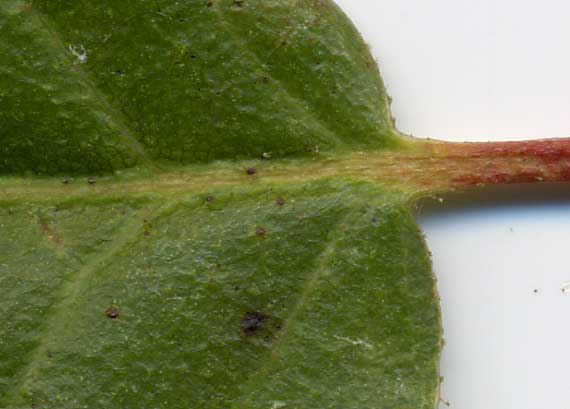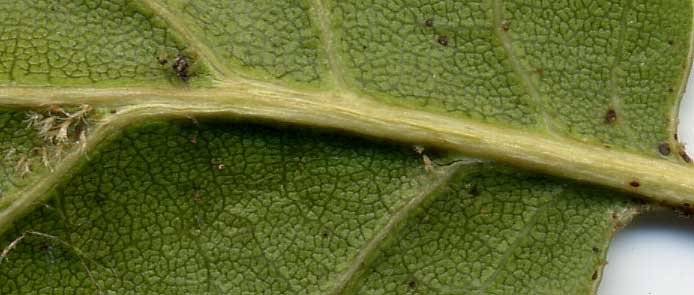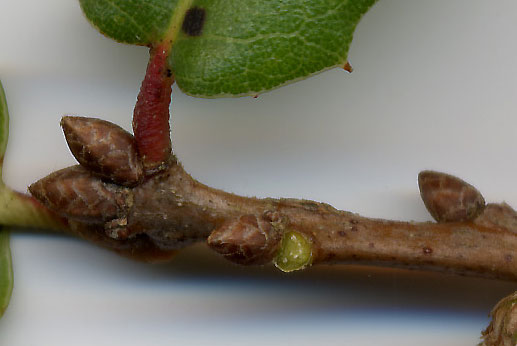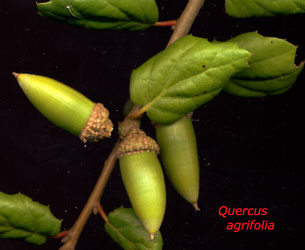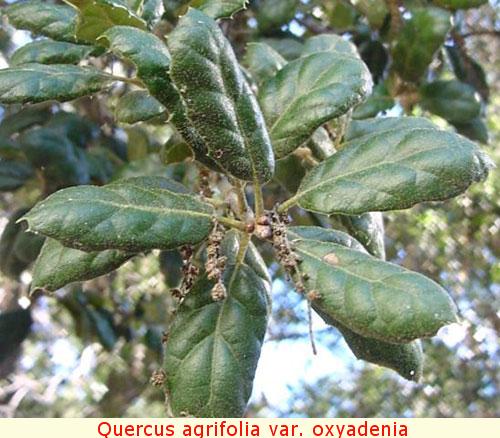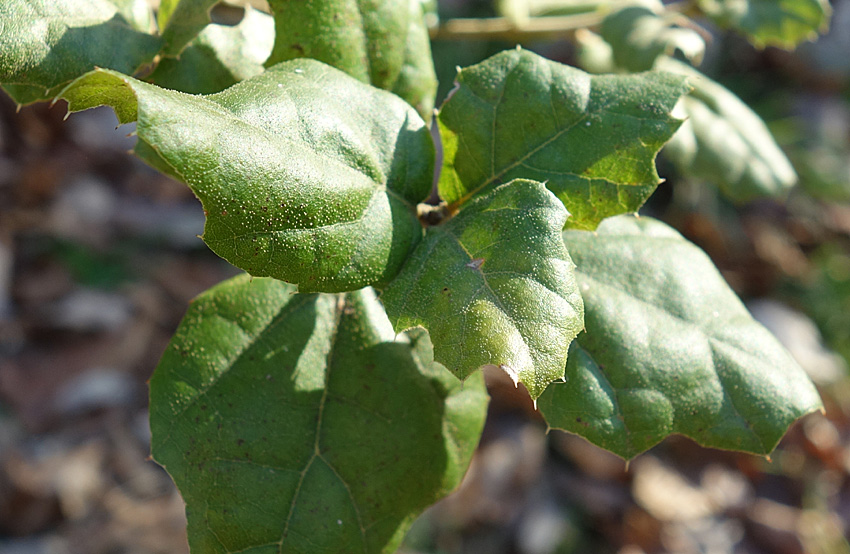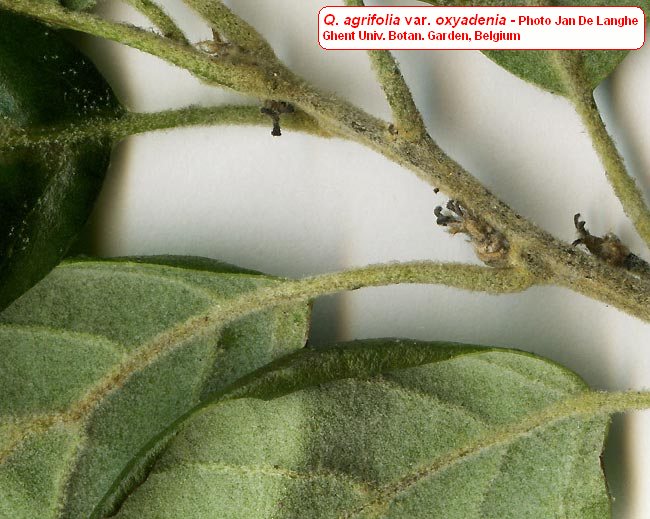| Quercus agrifolia | |
| Author | Née 1801 Anales Ci. Nat. 3: 271 1801. |
| Synonyms | acroglandis Kellogg 1873 acutiglandis Sarg. 1884 agrifolia var. frutescens Engelm. pricei Sudw. 1907 |
| Local names | coast live oak; navel; California live oak; |
| Range | California ; Mexico (Baja California) ; from sea level to 900 m ; introduced in Europe in 1849 by Hartweg ; |
| Growth habit | can reach 25 m high, but more often shrubby, with prostrate twigs; spreading and rounded crown; trunk often divided from the base; |
| Leaves | 2.5 to 7 cm long, 1.2 to 4 cm wide; evergreen; thick; elliptic, oval or oblong, sometimes almost rounded; most often convex above; apex obtuse or slightly acute; base rounded or remotely cordate; margin with spiny teeth, rarely entire ; dark lustrous green and glabrous above, paler beneath with some axillary tufts of stellate trichomes; slightly pubescent petiole, 0.5 to 1.5 cm long; |
| Flowers | small catkins, 3-6 cm long; on hairy pedicel in first spring; |
| Fruits | sessile acorns 2.5-3.5 cm long; paired or most often solitary; elongated and pointed; enclosed for 1/4 or 1/3 of length in a 1.5-2 cm long, shallow cupule with thin, pointed, imbricated scales; scales with free, purplish margins; inner surface of nut shell downy; maturing in 1 year; edible; |
|
Bark, twigs and |
grey or dark brown bark, with broad ridges; brown twigs, somewhat pubescent, 1.5-3 mm in diameter; terminal bud chestnut brown, ovoid, 3-6 mm long, glabrous except ciliate margin scales; |
| Hardiness zone, habitat | hardy; all types of soils (prefers dry sites); |
| Miscellaneous | -- A. Camus : n°
297; -- Sub-genus Quercus, section Lobatae, sub-section Agrifoliae; -- Rare in cultivation; -- Resembles Q.ilex ; looks also like Q.wislizeni and Q.parvula but the two latter have flat or weakly convex blade leaves, and not any hair beneath; -- Hybridizes with Q.wislizeni and Q.kelloggii (see x ganderi); |
| Subspecies and varieties |
--- var. oxyadenia
(Torr.) J.T.Howell 1931 = Q.oxyadenia Torr. in R.B.Marcy 1853 leaves strongly pubescent, even felty beneath; petioles and young twigs downy; inhabits not so close to the coast as the type, and more southerly; 100 to 1600 m. For S. Valencia-A. 2004 and Govaerts, 2007, it is actually the type species. In 2017, Keuter & Manos have "found no molecular evidence suggesting that Q. agrifolia var. oxyadenia should be elevated above varietal rank, and no analyses recovered our samples of Q. agrifolia var. oxyadenia as monophyletic". It is not quite similar to the type only in response to climatological differences : higher elevation and drier southern region. |
| Pictures |
More pictures HERE
|
